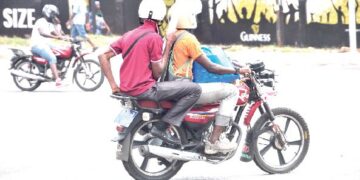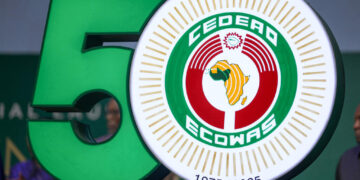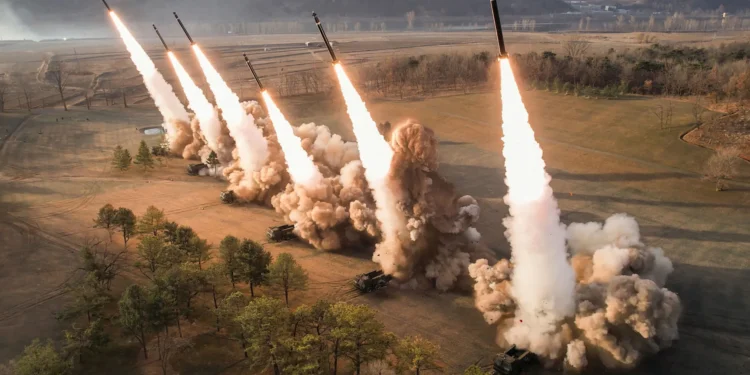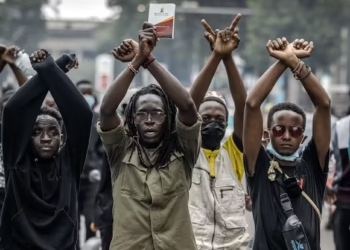The Democratic Peoples Republic of Korea is widely regarded as a country that is closed to the rest of the world. It has limited diplomatic relations and has been sanctioned by the United Nations for its nuclear arms development.
Considered as a repressive regime, its human rights record has often been criticised for poor freedom of speech, repression of religious freedom as well as freedom of movement. It has been accused of weapons proliferation to Syria, Iran, Libya and Sudan in the past. Recent advancements in its missile and space launch technology have given rise to real and emerging security implications, particularly for the Sahel given its history of arms sales.
North Korea on 3rd May, 2025, published pictures on social networks, of the mass production of one of the world’s most powerful rocket launcher systems, named KN-25, which is armed with 600mm guided rockets and capable of striking targets up to 380 km away. The emergence of the KN-25 could introduce a serious new threat to the conflict in the Sahel, should any of the warring factions get access to the state-of-the-art equipment. Unlike older artillery systems with limited range and accuracy, the KN-25’s long reach and precision makes it capable of targeting military or terrorist bases, as well as key sensitive, industrial and civilian centers. The mass-production of this weapon suggests that countries grappling with terrorism in the Sahel could solicit the assistance of North Korea to secure it with the right procurement processes.
However, in the event of the weapon getting into a wrong hand, as has been the growing trends of terrorists attacking military bases in the Sahel countries to seize their weapons and armory, as well as other military items including drones, the armed terrorist groups could cause a lot of damage and serious humanitarian disasters in the region and the surrounding coastal countries.
It is worth noting that, terrorist groups operating in Burkina Faso and Mali are noted to be using the conventional rockets and combat drones seized from the military during high complex attacks. It is therefore possible that the KN-25 rocket launcher if procured by any of the Sahelian country in the name of the fight against terrorism, could equally get into wrong hands with dire consequences for the West African sub region.
According to a publication by the Army Recognition in May 2025, the KN-25, represents a hybrid between the traditional multiple launch rocket systems and tactical ballistic missiles. It is mounted on two forms, firstly, on a tracked chassis version, which is the one confirmed to be in mass production, that includes six (6) launcher tubes arranged in two (2) rows of three (3) at the rear, each designed to fire 600mm rockets. It also features an armored crew cab at the front and the vehicle’s suspension system includes ten double road wheels on each side, providing the system with excellent mobility across rugged terrain and enhancing its operational flexibility on the battlefield. Secondly, on a wheeled Transporter-Erector-Launcher (TEL) variant equipped with four (4) tubes, optimized for high-speed road mobility.
The system’s quasi-ballistic trajectory and high terminal speed complicate interception efforts by opponents, posing a significant challenge to conventional Counter Rocket, Artillery, and Mortar (C-RAM) system as well as missile defense systems. It has an in-built system which provides a high level of accuracy, that allows for targeted destruction of critical military infrastructure such as airfields, command and control centers, logistic hubs and radar installations as well as other critical infrastructure.
It is noted that, the KN-25 first appeared in military parades and state media coverage in 2019, initially presented as a “super-large caliber multiple launch rocket system.” Its unique design and exceptional firepower immediately attracted the attention of security and defense practitioners and analysts, who noted that it has a complex characteristic between Multiple Launch Rocket System (MLRS) and Tactical Ballistic Missile (TBM) systems. Over the years, the system has undergone numerous tests, with North Korea showcasing successive improvements in range, accuracy, and salvo-firing capability. These developments are believed to be driven by a strategic intent to establish a precision-strike weapon that is less expensive and more deployable than conventional missiles but still capable of delivering similar levels of destruction.
In the fight against terrorism in the Sahel, the frustrated nature of the various governments as well as their zeal to showcase their strength in acquiring modern and sophisticated weapons to fight the terrorists could lead them to acquire this state-of-the-art equipment perhaps, through their new ally, Russia, which is a close ally of North Korea. Should this move be made by the embattled Sahelian countries including Burkina Faso, Mali and Niger, it could represent a significant escalation of artillery threat in the Sahel, which would have a cascading effect on the neighboring coastal countries including Ghana, Benin, Togo and Cote d’Ivoire. The system would provide the Sahel countries’ governments with a flexible and rapid-response deep strike option that could be used for both tactical battlefield engagements and strategic deterrence, which could also pose a threat to the militaries of the neighboring countries.
The mass production status of the KN-25 suggests that North Korea could field these systems in large numbers, allowing any interested and connected allies get access to the equipment. In this regard, the sub regional bodies and the West African countries may show interest in the weaponry stock and supply of the Sahelian countries in the name of fighting terrorism, in order not to threaten and endanger the entire region.
Ghana and its sister coastal states within Ecowas face a key security challenge. The soft power they could exert on Burkina Faso, Mali and Niger has been significantly undermined by their exit from the bloc. The existential threats these countries face is forcing them into closer union with Russia and other relatively less democratic countries. The total contribution of the AES countries to West Africa’s GDP is less than 10%, indicating the small size of their markets. Given the rising prices for gold on the world markets, there are strong indications of trading minerals for weaponry to deal with the terrorist threats. Ghana, and its Ecowas partners need to be proactive to ensure their territories are safe within the medium to long term. The time to act is now.






























